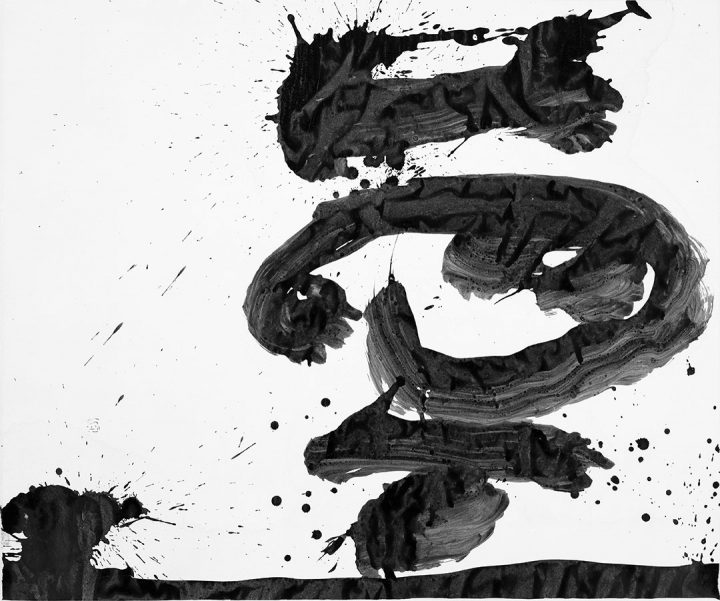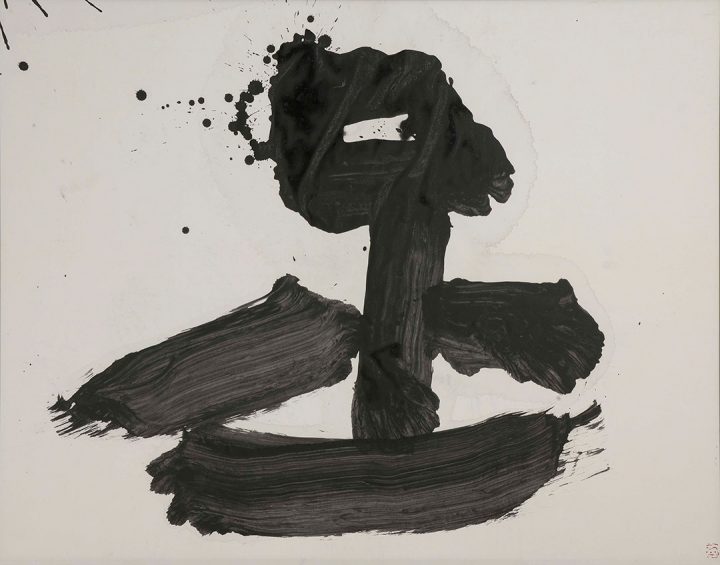1916 – 1985
Studies under the calligrapher, Sokyu Ueda but Inoue aspires to turn calligraphy into the real of art. Breaks with tradition and founds Bokujin-kai in 1952. He gains international recognition as an artist early on and in 1956, participates Kunsthalle Basel in Switzerland. In the following year, English art critique, Herbert Read greatly admires Inoue’s works at the São Paulo Biennial (Brazil). His works are highly appreciated at Documenta II in Kassel (Germany) and Carnegie International in New York. In Germany, Cologne based Gallery Zwirner organizes his solo exhibition both in 1962 and 1965. With the original textured sumi-ink invented through a trial and error process, his one character writing style has such an irresistible charm, which has truly universal in value. Especially, the letter of Poverty becomes the representative work that clearly shows the principle of the artist. Inoue rejects to incorporate his artistic activities into business thus he works all his life as an educator. In commemoration of one-hundredth year of Inoue’s birth, Kanazawa 21st century museum has large-scale retrospective exhibition in 2015.
Collection:
The National Museum of Modern Art (Tokyo, Kyoto, Osaka), Today Art Museum (Beijing), The Metropolitan Museum of Art (New York), Museum of East Asian Art (Cologne), Langen Foundation (Germany), Reitberg Museum (Switzerland), etc.
Selected Artworks
 |
 |
| Dream | Taru |